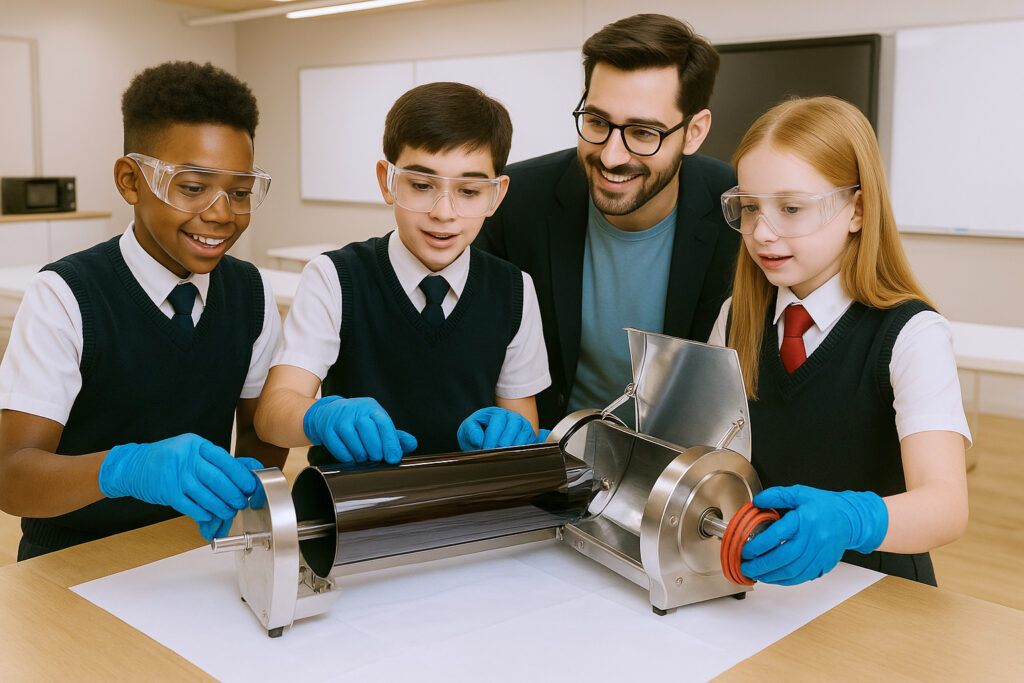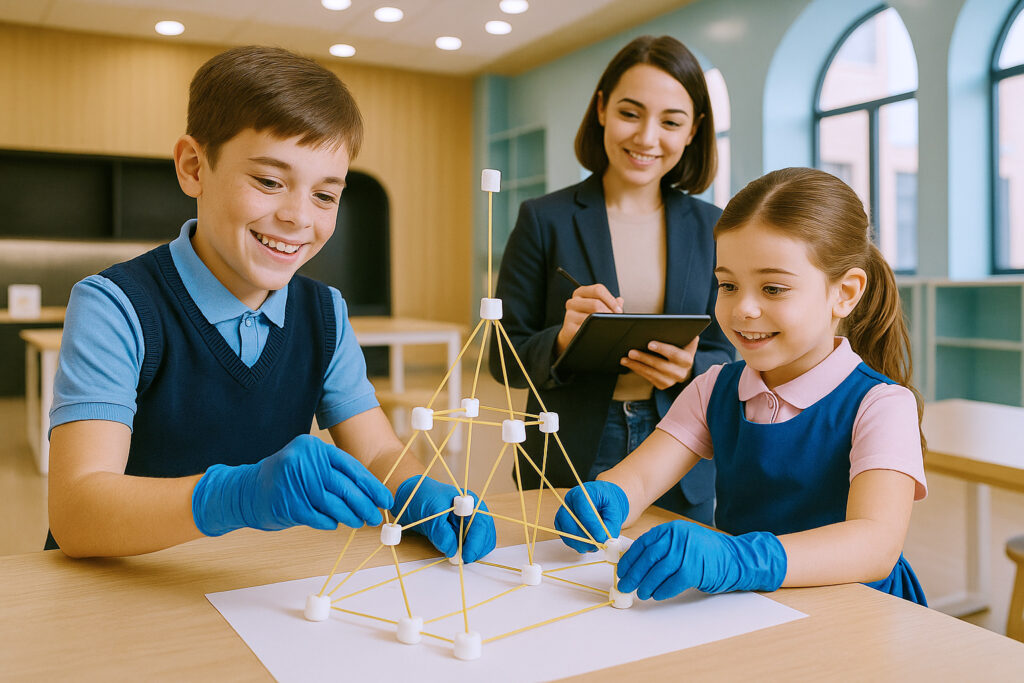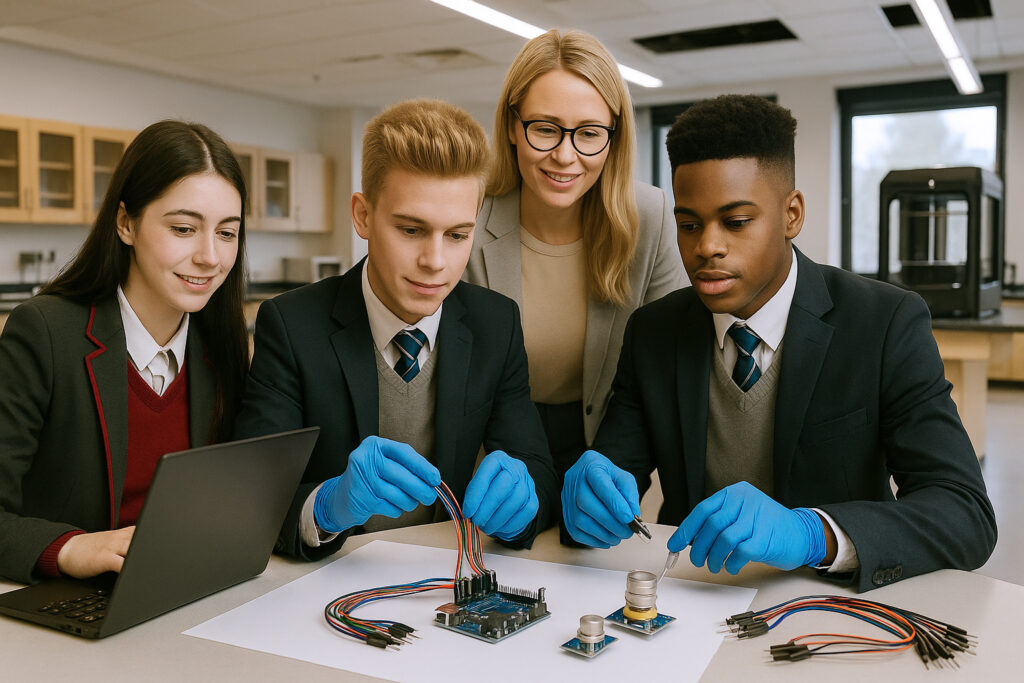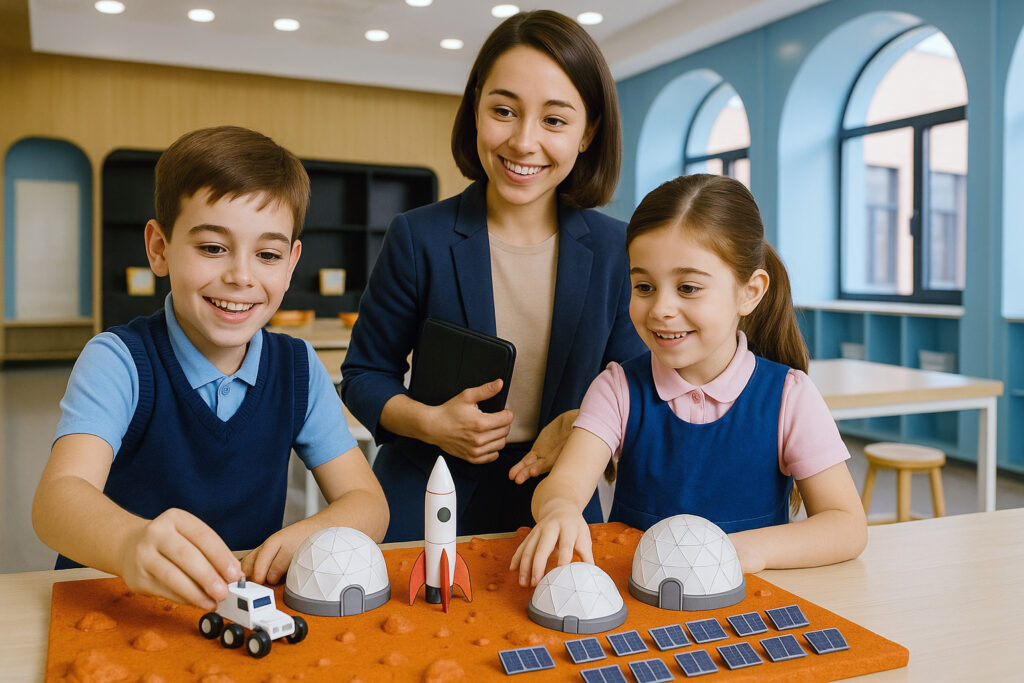SteriLite
Students propose a UV-based school sterilization system by analyzing real products, calculating coverage and effectiveness, and presenting a commercial plan that includes technical specs and profit margins.
- High School
In this real-world engineering and business challenge, students explore how UV light technology can be used to create safer, healthier learning environments. Their goal is to design a UV-based sterilization solution for schools. First, students research how ultraviolet light—particularly UV-C—kills bacteria and viruses, and investigate real products available on the market. They study the technical specs of these devices, including effective sterilization range (in meters), required exposure time per square meter, and power requirements. Using this data, students calculate how many UV units are needed to sterilize a typical classroom or school safely. They then propose the optimal installation method, ensuring maximum efficiency and safety. Finally, students shift to an entrepreneurial mindset by playing the supplier role, which prepares a commercial proposal (that includes cost estimation, pricing, and a profitable margin, simulating a real business offering. This project integrates physics, public health, design, and financial literacy—empowering students to tackle a relevant challenge with innovative, market-ready thinking.
For more Information:
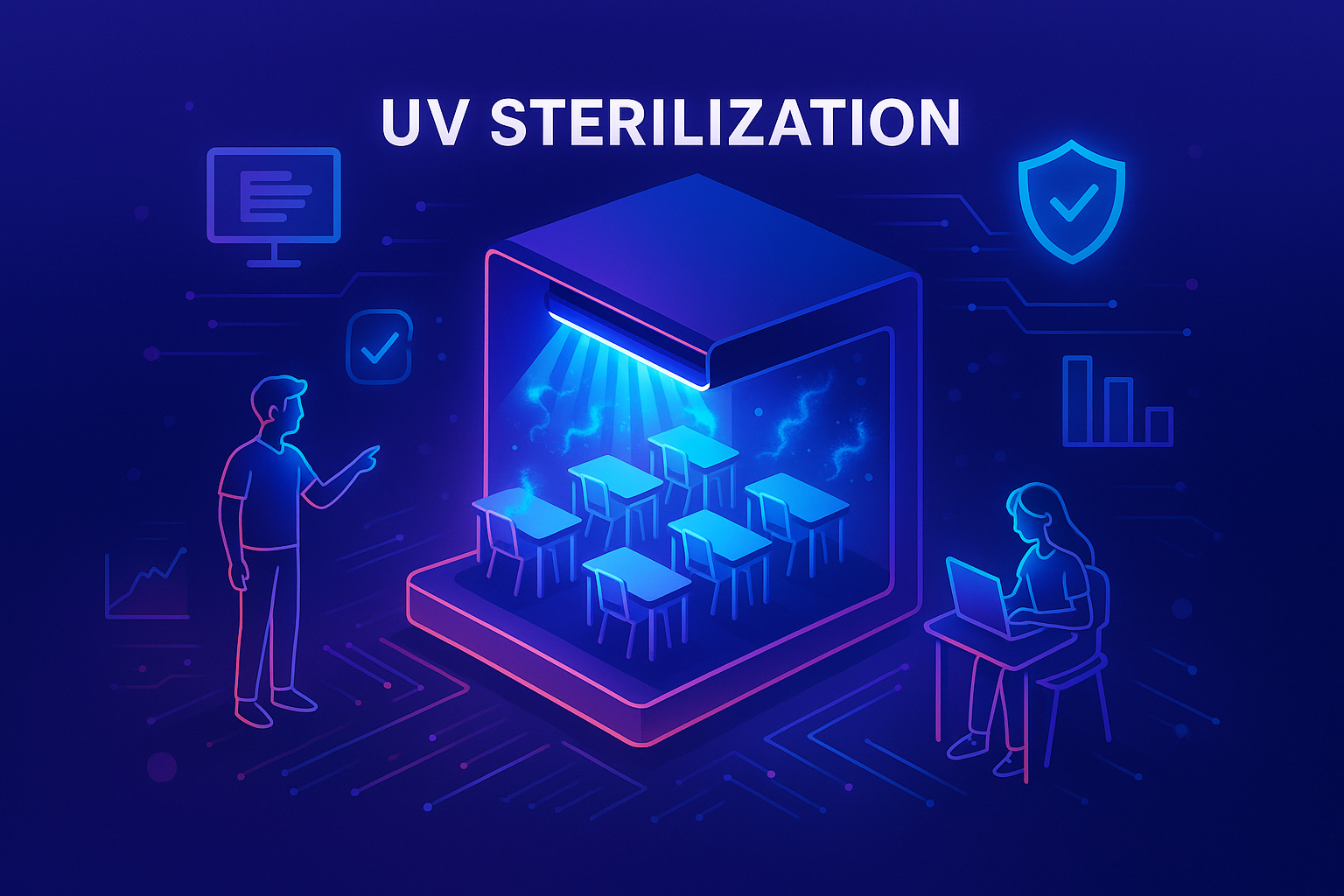
For more Information:
- Detailed Project Plan following the Engineering Design Cycle for a high school.
- Assessment Criteria for each stage with level descriptors.
- Aligned with American Standards and practices (NGSS, CCSS, & ISTE).
- Access to the Basic ProjoTech App on any web browser.
- Digital Resources and worksheets are allocated to different tasks.
- Comprehensive Teacher Guide.
- List of required tools and devices in the school.
- Optional Skills & Standards Achievement features.
For more Information:

